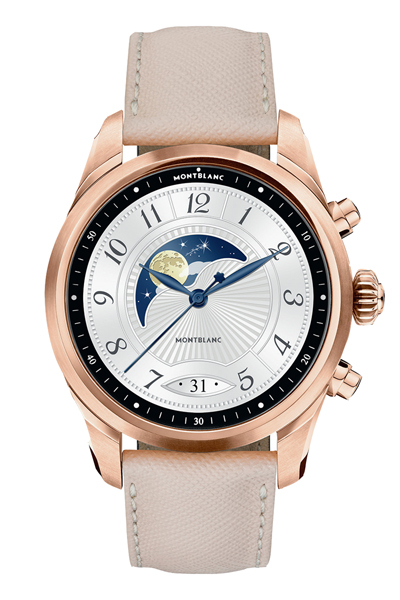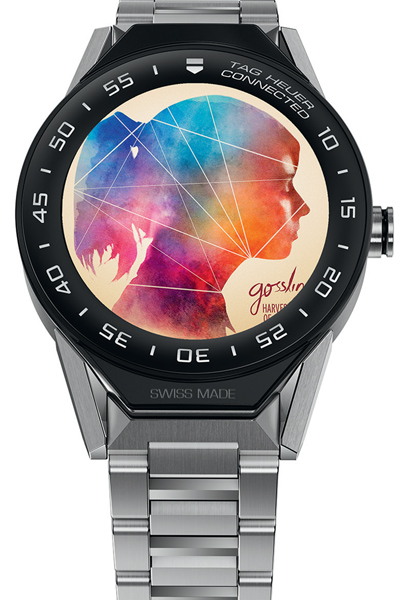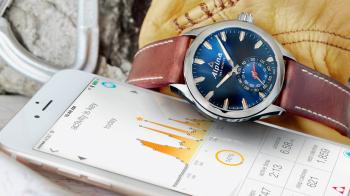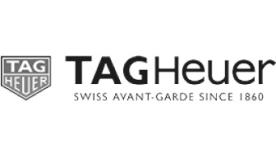What do Alpina, Breitling, Montblanc, Louis Vuitton, Frederique Constant, de Grisogono, TAG Heuer, and Hublot all have in common? They all made connected watches! The intellectual shift over the past in 20 years is huge. In 2000, connected watches were a gadget for geeks running Linux or PalmOS. By 2020, they had become everyday accessories. Arguments about tradition, modernity and sustainability aside, the human anatomy always has the last word: a wrist is a wrist. We can use it to wear a mechanical watch, or a connected watch, but not really both at the same time; and so the fight is on.

One Market, Two Families
According to Strategy Analytics, Apple delivered 30.7 million smartwatches in 2019 – a rise of 36%. At the same time, according to the Federation of the Swiss Watch Industry, 20.6 million Swiss watches were dispatched – a drop of 13%. To put it another way, Apple alone makes more watches than all the Swiss brands put together.
Over the course of the past 20 years, this ‘connected market’ has organised itself into two families: mobile phone players such as Samsung, Huawei, LG and Motorola on the one hand; and pure connected watch players including Garmin, Polar, Fitbit, Withings, and Sequent on the other.
Swiss watchmaking has attempted to thread the needle through the gap between these two positions. Its target audience consists of those for whom the word ‘watch’ is just as important as the word ‘connected’: people who love a high-quality, well-finished and attractively styled product – and wherever possible, Swiss Made.

Connected – And Swiss Made
Frederique Constant was the first to go down this road. In 2015, its Horological Smartwatch laid the foundations of an elegant, sober and refined style. It uses quartz technology coupled with functionalities developed by a Swiss entity, Manufacture Modules Technologies (MMT), also owned by Frederique Constant at that time. The Horological Smartwatch thus became the first Swiss Made connected watch. It had little in the way of embedded intelligence, relying instead on the mobile phone to which it was connected. While this meant it had few intrinsic capabilities, it also allowed it to boast several years’ worth of battery life – and be about the same size as an ordinary watch.

Three years later, in 2018, Frederique Constant offered a step forward from its Horological Smartwatch: the Hybrid Manufacture. This was the first Swiss Made watch to combine a Manufacture calibre, connected functions, and, on the connected side, a system to measure the isochronous timing of the mechanical part of the movement. In a nutshell, you could check your smartphone to see whether your watch was telling the right time, running slow, or running fast – and thus tell if it needed servicing. The principle was first developed in 2013 by Urwerk with its Electro Mechanical Control (EMC), the electronic part of which was already able to ‘listen’ to the mechanical part, and indeed correct it if necessary.
New Arrivals
In 2015, Montblanc sought a middle way with its e-Strap. However, the device - which displayed short messages scrolling across a miniature screen on the strap itself - was not a popular success. One after the other, luxury players gradually positioned themselves in line with their specific universes. Breitling released the Exospace B55 for aviation. Jaeger-LeCoultre released an Amvox – allowing you to unlock your Aston Martin remotely. In keeping with its travel ethos, Vuitton provided the Tambour, while Hublot launched a soccer-themed limited edition for the 2018 World Cup in Russia. Alpina borrowed the module developed by its parent company Frederique Constant for an ‘outdoor’ model. Meanwhile, Montblanc made a fresh attempt with a Summit 1 in 2017, followed by the V2 in 2018 and the V2+ in 2020.

The most radical breakthrough came from TAG Heuer. Headed by Jean-Claude Biver at the time, the brand took the bull by the horns, entering into a direct partnership with Android. That was back in 2015. By 2020, the third-generation model had arrived. When their Connected pieces first came out, TAG Heuer even gave buyers the option of trading them in for a mechanical version after two years (and for an additional $1,500). In and of itself, that pitch embodied the extent to which the Swiss are in two minds when it comes to all things connected.
*On the occasion of GMT Magazine and WorldTempus' 20th anniversary, we have embarked on the ambitious project of summarising the last 20 years in watchmaking in The Millennium Watch Book, a big, beautifully laid out coffee table book. The Millennium Watch Book is available on www.the-watch-book.com, in French and English.








